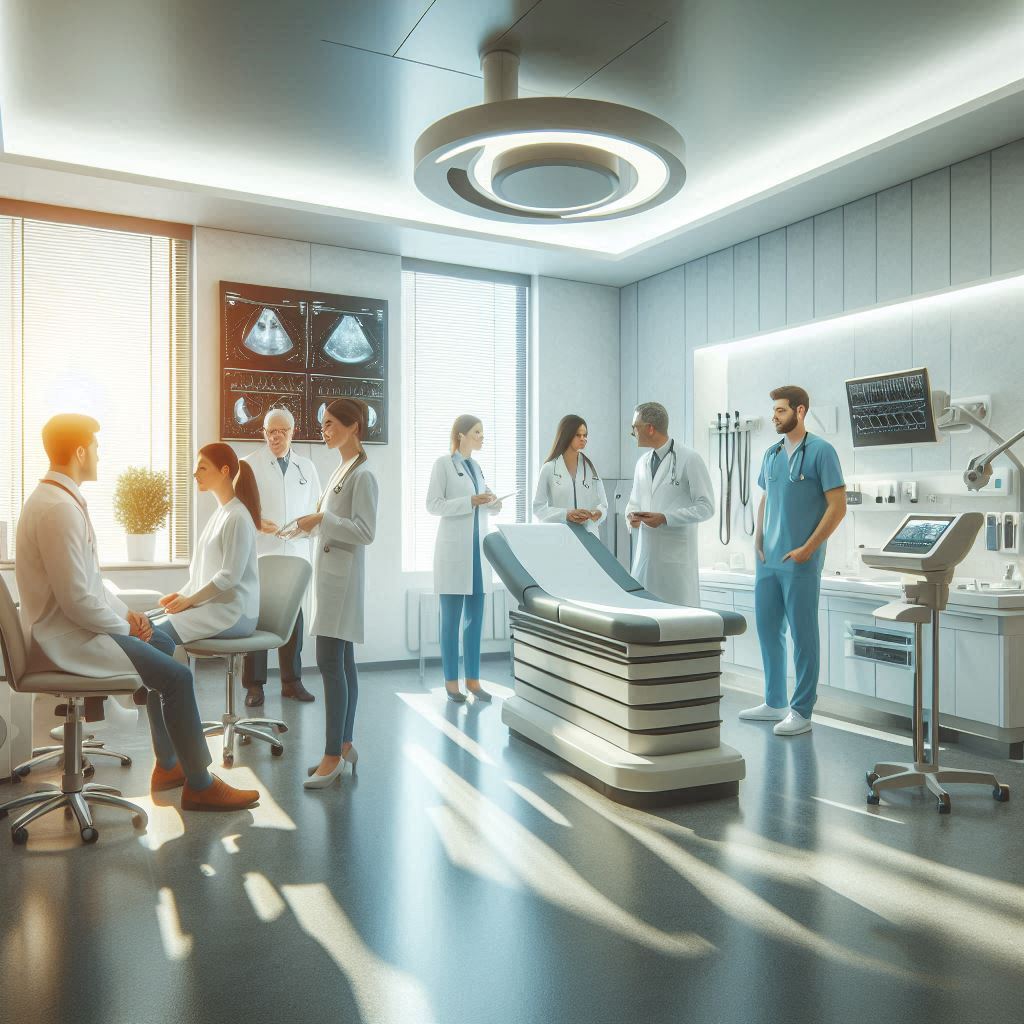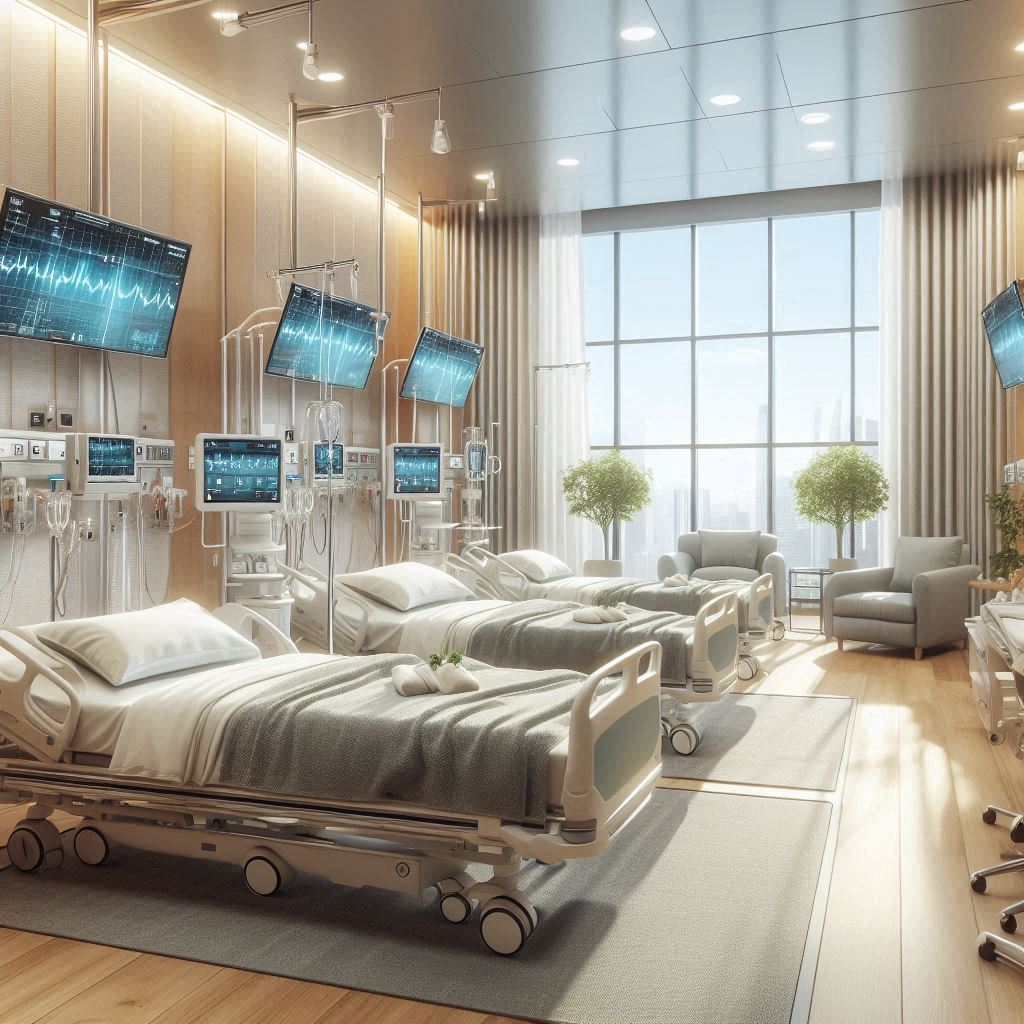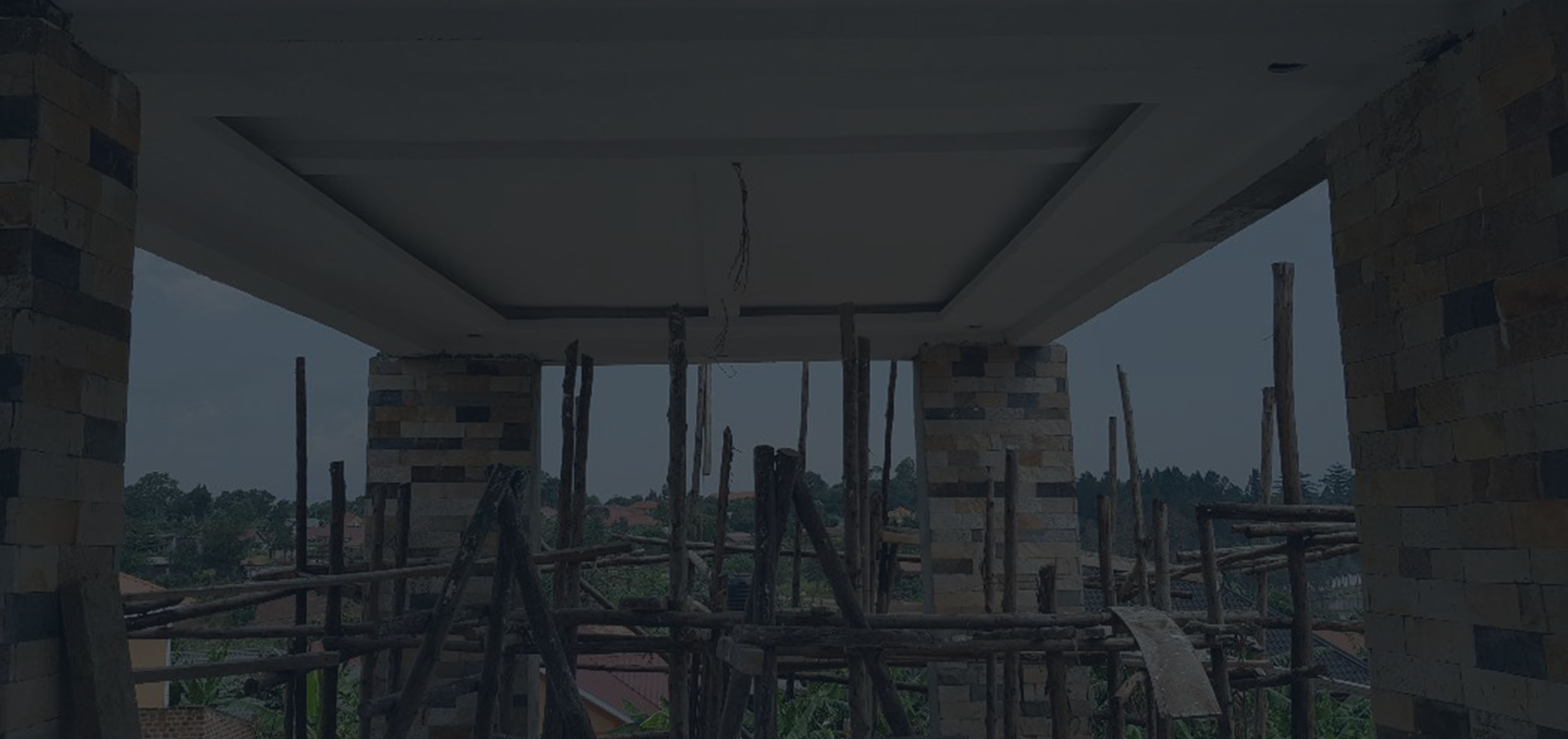
Empowering Communities Through Innovation
Discover Our Latest Projects and Initiatives
At OMO Skilled Investments Ltd, we are committed to driving progress and creating sustainable solutions across various sectors. Explore our projects that are transforming communities and making a lasting impact.
Learn MoreProposed Projects

Plan for a high-class specialized hospital focusing on women's fertility and transurethral resection, along with an associated medical training university:
Executive Summary
Mission Statement: To provide world-class fertility and transurethral resection treatments, alongside comprehensive medical education.
Vision: To be a global leader in women's health and urological treatments, and a top-tier educational institution.
Goals: Achieve high success rates in treatments, attract top medical professionals, and produce highly skilled graduates.
Market Analysis
Industry Overview: The global market for fertility services and urological treatments is growing, with a combined market size projected to exceed $50 billion by 2026.
Target Market: Women and couples seeking fertility treatments, patients requiring transurethral resection, and medical students specializing in reproductive and urological health.
Competitive Analysis: Identify key competitors, their strengths and weaknesses, and market positioning.
Here are some institutions in Uganda that provide similar services, along with their strengths and weaknesses:

Fertility Clinics
Bethany Fertility Centre
Strengths:
Offers a wide range of fertility services including IVF, IUI, ICSI, and surrogacy. Known for its experienced specialists and state-of-the-art facilities.
Weaknesses:
Limited to urban areas, which may make it less accessible to patients in rural regions.
Paragon Fertility Centre
Strengths:
Provides comprehensive fertility treatments and psychosocial counseling. Known for its advanced ultrasonography and family balancing services.
Weaknesses:
Higher costs compared to other clinics, which might be a barrier for some patients.
Neogenesis Fertility Centre
Strengths:
Offers a holistic approach to fertility care, including fertility preservation, PCOS management, and endometriosis treatment. Well-trained staff with vast expertise.
Weaknesses:
Limited marketing and outreach efforts, which might affect patient awareness and accessibility.
Medical Training Universities
Makerere University School of Medicine
Strengths:
Long-standing institution with a strong reputation, offering a wide range of medical courses and research opportunities.
Weaknesses:
High competition for admission due to limited slots, which can be challenging for prospective students.
Mbarara University School of Medicine
Strengths:
Known for its practical approach to medical education and strong community health programs.
Weaknesses:
Limited resources and facilities compared to larger institutions, which might affect the learning experience.
Gulu University School of Medicine
Strengths:
Focuses on rural health and community medicine, providing students with hands-on experience in underserved areas.
Weaknesses:
Limited research funding and facilities, which might impact the quality of education and research opportunities.
Kampala International University School of Health Sciences
Strengths:
Offers a variety of health science programs and has modern facilities.
Weaknesses:
Relatively new institution, which might affect its reputation and recognition compared to older universities.
Busitema University School of Medicine
Strengths:
Focuses on rural health and community medicine, providing students with hands-on experience in underserved areas.
Weaknesses:
Limited research funding and facilities, which might impact the quality of education and research opportunities.
These institutions each have their unique strengths and weaknesses, and the choice of institution would depend on the specific needs and preferences of the patients or students.
Services Offered
Fertility Treatments:
IVF, IUI, egg freezing, surrogacy, genetic screening, and counseling.
Transurethral Resection:
Diagnosis and treatment of bladder and prostate conditions, minimally invasive procedures, and post-operative care.
Medical Training:
Undergraduate and postgraduate programs in reproductive medicine and urology, internships, and residency programs.
Operational Plan
Facility Requirements:
State-of-the-art medical equipment, comfortable patient rooms, research labs, and training facilities.
Staffing:
Hiring experienced fertility specialists, urologists, embryologists, nurses, administrative staff, and educators are recommended.
Location:
Due to its accessible to a large population and with proximity to academic institutions, Tororo in Eastern Uganda bordering Kenya if in focus
Financial Plan
Startup Costs:
Facility setup: $15 million,
Equipment: $7 million,
Furnishings: $2.5 million,
IT systems: $1.5 million,
Staffing and training: $3 million,
Legal and licensing fees: $600,000,
Marketing: $700,000,
Contingency fund: $1.5 million.
Total Initial Setup Costs:
$31.8 million.
Revenue Streams (Yearly)
Fertility Treatments: $18 Million,
Transurethral Resection: $10 Million,
Medical Training Fees: $7 Million,
Research Grants and Partnerships: $3 Million,
Consultation Fees: $1.5 Million,
Total Projected Revenue: $39.5 Million.
Financial Projections (First 5 Years)
| Year | Revenue | Operating Expenses | Net Profit |
|---|---|---|---|
| Year 1 | $39.5 Million | $25 Million | $14.5 Million |
| Year 2 | $42 Million | $25 Million | $17 Million |
| Year 3 | $45 Million | $25 Million | $20 Million |
| Year 4 | $48 Million | $25 Million | $23 Million |
| Year 5 | $52 Million | $25 Million | $27 Million |
Break Even Analysis
Break Even Point:
Approximately 2 years.
Year 1:
Initial revenue and net profit projections, assuming successful marketing and patient enrollment.
Year 2-5:
Steady growth in revenue and net profit, driven by increased patient numbers, improved treatment success rates, and expanding academic programs.Funding Requirements
Equity Financing:
Amount: $15 million
Details: Funds raised from investors in exchange for ownership shares in the hospital and university.
Debt Financing:
Amount: $12 million
Details: Loans and other forms of debt used to finance the project, with the obligation to repay with interest.
Grants and Donations:
Amount: $5 million
Details: Non-repayable funds from government grants, philanthropic organizations, and private donors.
Total Funding Required: $32 million
A combination of equity financing, debt financing, and grants/donations to cover initial setup costs and ensure smooth operations.
Marketing Strategy
Branding:
Develop a strong brand identity emphasizing excellence in fertility and urological treatments and medical education.
Outreach:
Use digital marketing, social media, community events, and partnerships with healthcare providers to attract patients and students.
Patient Experience:
Provide exceptional patient care and support services to build a loyal patient base.
Legal and Regulatory Compliance
Licensing:
Obtain necessary licenses and certifications to operate a fertility and urology clinic and medical training institution.
Regulations:
Ensure compliance with healthcare regulations, patient privacy laws, and educational standards.
Performance Metrics
Hospital Performance Metrics:
• Patient Satisfaction: Track patient feedback scores and Net Promoter Score (NPS)
• Clinical Outcomes: Monitor success rates of treatments and complication rates
• Operational Efficiency: Measure average treatment time and bed occupancy rate
• Financial Performance: Evaluate revenue growth and operating margin
Medical Training University Metrics:
• Student Satisfaction: Collect student feedback scores and retention rates
• Academic Performance: Track graduation rates and exam pass rates
• Career Outcomes: Monitor employment rates and residency match rates
• Research and Innovation: Count research publications and research funding
Continuous Improvement Metrics:
• Staff Training Hours: Average number of hours spent on professional development
• Patient Follow-Up: Percentage of patients receiving timely follow-up care
• Feedback Implementation: Rate of actionable changes from feedback
Conclusion
This business plan covers all key aspects, including market analysis, services offered, operational plan, financial plan, marketing strategy, legal compliance, and performance metrics.
Call to Action:
We encourage stakeholders to support the project and invest in its realization.


Comprehensive business plan for a state-of-the-art Shopping Center.
Executive Summary
Project Overview: Construction of a modern shopping center with a cinema hall, two sizable restaurants, and a nightclub.
Location: Kampala, Uganda.
Vision: To create a premier shopping and entertainment destination that attracts a diverse range of visitors.
Objectives: To provide a unique shopping experience, enhance local economic growth, and offer diverse entertainment options.
Market Potential: Kampala has seen significant growth in its retail sector, driven by rising disposable incomes and urbanization. The integration of entertainment options like cinemas and nightclubs can attract a diverse crowd, enhancing foot traffic and spending.
Target audience:
• Families and young professionals for the cinema hall and restaurants.
• Young adults and tourists for the nightclub.
• Shoppers looking for a one-stop destination for shopping, dining, and entertainment.
Strengths:
• Unique Offerings: Your shopping center can differentiate itself by offering a unique theme or ambiance.
• Prime Location: A strategic location in Kampala can attract more foot traffic.
• Integrated Experience: Combining shopping, dining, and entertainment in one location.
Weaknesses:
• High Operational Costs: Managing multiple entertainment options can be costly.
• Seasonal Fluctuations: Attendance may vary based on seasons and holidays.
• Regulatory Challenges: Compliance with local regulations and licensing requirements.
Opportunities:
• Growing Middle Class: Increasing disposable incomes can lead to higher spending.
• Tourism: Attracting tourists looking for entertainment and shopping options.
• Technological Integration: Implementing digital solutions for ticketing, reservations, and promotions.
Threats:
• Economic Downturns: Economic instability can affect consumer spending.
• Competitive Market: Other shopping centers and entertainment venues in Kampala.
• Changing Consumer Preferences: Adapting to evolving trends and preferences.

Business Model
Revenue Streams: Rent from retail stores, cinema ticket sales, restaurant and nightclub revenues, parking fees, and advertising.
Cost Structure:
Construction costs: $50 million
Operational expenses: $2 million annually
Staff salaries: $3 million annually
Maintenance: $1 million annually
Marketing: $500,000 annually
Location and Site Selection
Accessibility: The location is with in good transportation links and visibility.
Infrastructure: The site has adequate utilities, parking facilities, and space for future expansion.
Zoning Regulations: There is compliance with local zoning laws and obtain necessary permits.
Design and Construction
Architectural Plan: To Collaborate with architects to design a modern, aesthetically pleasing structure.
Construction Timeline: A detailed timeline for each phase of construction, from groundbreaking to opening will be agreed upon.
Sustainability: Incorporate eco-friendly materials and energy-efficient systems.
Entertainment and Dining Facilities
Cinema Hall: A state-of-the-art cinema with advanced projection systems, comfortable seating, and high-quality sound will be designed.
Restaurants: Two sizable restaurants with diverse cuisines, spacious dining areas, and modern kitchen facilities will be incorporated.
Nightclub: A vibrant nightclub with a dance floor, DJ booth, lighting, and sound systems will also be designed.
Marketing and Promotion
Branding: A strong brand identity for the shopping center will be developed.
Advertising: Will use a mix of traditional and digital marketing strategies to attract visitors.
Grand Opening: A grand opening event with special promotions and entertainment will be planned.
Financial Projections
Initial Investment:
Construction: $50 million
Equipment: $10 million
Initial operating expenses: $5 million
Total: $65 million
Revenue Forecast:
Year 1: $10 million
Year 2: $15 million
Year 3: $20 million
Break-even Analysis:
Break-even point: 3 years
Monthly break-even revenue: $2.5 million
Management and Operations
Staffing: Qualified staff for management, operations, maintenance, and customer service will be hired.
Training: Provide training programs to ensure high-quality service.
Maintenance: A maintenance schedule to keep the facilities in top condition will be established.
Risk Management
Contingency Plans: Plans for potential risks such as construction delays, budget overruns, and changes in market conditions will be developed.
Insurance: Appropriate insurance coverage for the property and operations will be obtained.
Call to Action: We encourage stakeholders to support the project and invest in its realization.


Delivering Excellence Through Innovation
Our Portfolio of Completed Projects
At OMOSKILLED Investments Ltd, we take pride in our track record of successfully delivered projects. Each completed project showcases our commitment to quality, innovation, and sustainable development. Browse through our gallery to see how we've transformed visions into reality across various sectors.
View GalleryProject Gallery






Projects Underway





